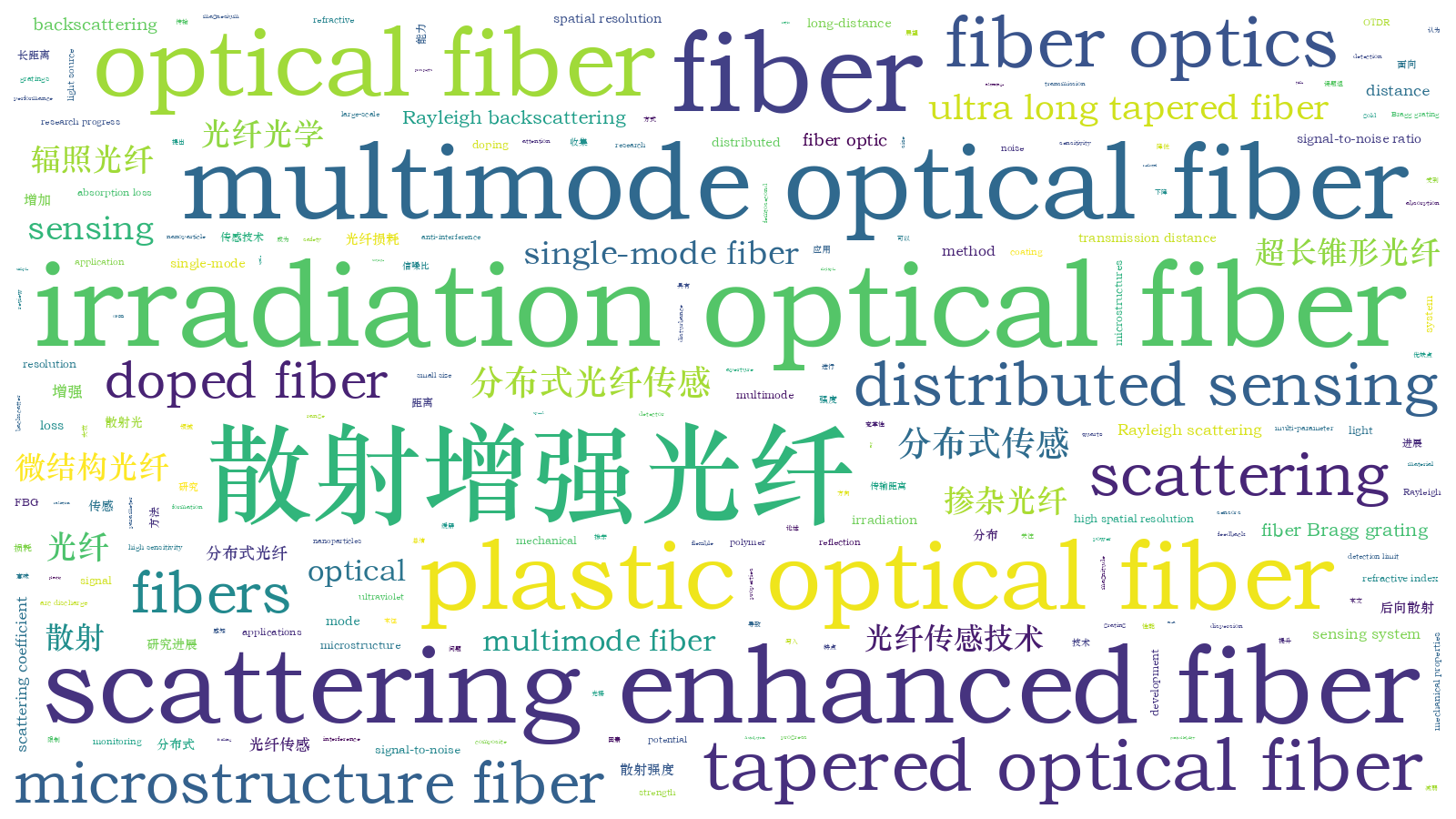面向分布式传感的散射增强光纤研究进展特邀综述
Fiber optic sensing technology has been widely applied in multiple fields and has received good feedback due to its advantages of strong anti-interference ability, small size, high sensitivity, long transmission distance, and intrinsic safety. Distributed sensing technology (OTDR, Φ-OTDR, and OFDR) based on Rayleigh scattering can achieve long-distance, large-scale, and multi-parameter monitoring, which has attracted more attention in applications. With the increasing demand for monitoring length and range in various application fields, the traditional methods of increasing light source power and detector detection limit have reached their peaks in increasing the system distance. The development of new scattering enhancement methods is urgent, so as to enhance the sensing distance of distributed sensing technology.
We review several ways to enhance the scattering light in fibers by enhancing their scattering coefficients and backscattering ability from the perspective of fibers, as well as the limitations and application scenarios of these methods. We also provide a detailed introduction to the latest scattering enhancement method, which enhances scattering by enhancing the backward collection coefficient and has potential development prospects in future distributed sensing.
The research progress of fiber optic scattering enhancement methods is as follows.
1) Enhancing fiber scattering by increasing the scattering coefficient. It is commonly used to increase the scattering coefficient of optical fibers through irradiation, microstructure, and nanoparticle doping to enhance the Rayleigh backscattering light of the fibers.
The irradiation method is to increase the refractive index disturbance in the fiber by ultraviolet or radiation irradiation. It is simple to operate and has continuous scattering enhancement. However, it will increase the loss of the optical fiber and reduce the sensing distance. At the same time, the preparation speed of the optical fiber is slow, requiring the removal of the coating layer and resulting in a decrease in mechanical strength. Therefore, the scattering enhanced fiber prepared in this way is difficult to apply to engineering environments.
The microstructure method refers to the formation of weak gratings, reflection points, Fabry Perot cavities, and other junction microstructures in optical fibers through ways such as ultraviolet, femtosecond, and arc discharge, resulting in significant refractive index changes. This method is flexible and has higher controllability, and it can be continuously prepared in large quantities without removing the coating layer and changing the mechanical strength of the optical fiber. However, it still increases the loss of the optical fiber and reduces the sensing distance, and the distribution of microstructures in the optical fiber is discrete, forming a minimum sensing area between two adjacent points, which reduces the spatial resolution of the distributed sensing system. This method is suitable for applications in sensing scenarios that do not require high spatial resolution.
The doping method of nanoparticles increases scattering in fibers by doping elements such as germanium, calcium, barium, gold, and magnesium. It has continuity, and the scattering enhancement is more obvious. In addition, it can be directly prepared through fiber drawing, which ensures the mechanical properties of the fiber. However, the high scattering enhancement also brings about a significant increase in losses. The losses of nano-doped fibers are generally two or three orders of magnitude higher than those of irradiation and microstructure and are generally applied in sensing scenarios with short distances and high signal-to-noise ratios.
2) Enhancing fiber scattering by increasing the backscattering collection coefficient. The method of increasing the backscatter collection coefficient to enhance fiber scattering theoretically does not increase the loss of the fiber, which mainly includes three types: plastic optical fiber, multimode optical fiber, and ultra long adiabatic tapered optical fiber.
Both polymer fiber and multimode fiber can increase the backward collection coefficient by increasing the numerical aperture, but the material absorption loss of polymer fiber itself is greater than that of quartz fiber. Therefore, it is generally applied in short-distance sensing scenarios. Multimode optical fibers have significant mode losses, and dispersion over long distances can degrade the spatial resolution of the system. It is commonly used in scenarios with lengths of kilometers.
Our team has proposed an ultra long tapered single-mode fiber that can increase the backward collection coefficient of the fiber to enhance scattering, without causing external losses. It can break through the distributed sensing long-distance limit of single-mode fiber and achieve sensing with an equal scattering signal-to-noise ratio at each point, and it can be applied to ultra long sensing scenarios with a length of above 150 km. Ultra long tapered single-mode fiber also has the advantage of enhancing the performance of fiber Bragg grating (FBG) arrays. Engraving FBG arrays on tapered optical fibers can effectively increase the remote reflection signal of FBG and expand the number of arrays, which has great development potential for future high-tech composite distributed sensors.
谭滔, 田野, 张建中. 面向分布式传感的散射增强光纤研究进展[J]. 光学学报, 2024, 44(1): 0106010. Tao Tan, Ye Tian, Jianzhong Zhang. Research Progress in Scattering Enhanced Optical Fibers for Distributed Sensing[J]. Acta Optica Sinica, 2024, 44(1): 0106010.







